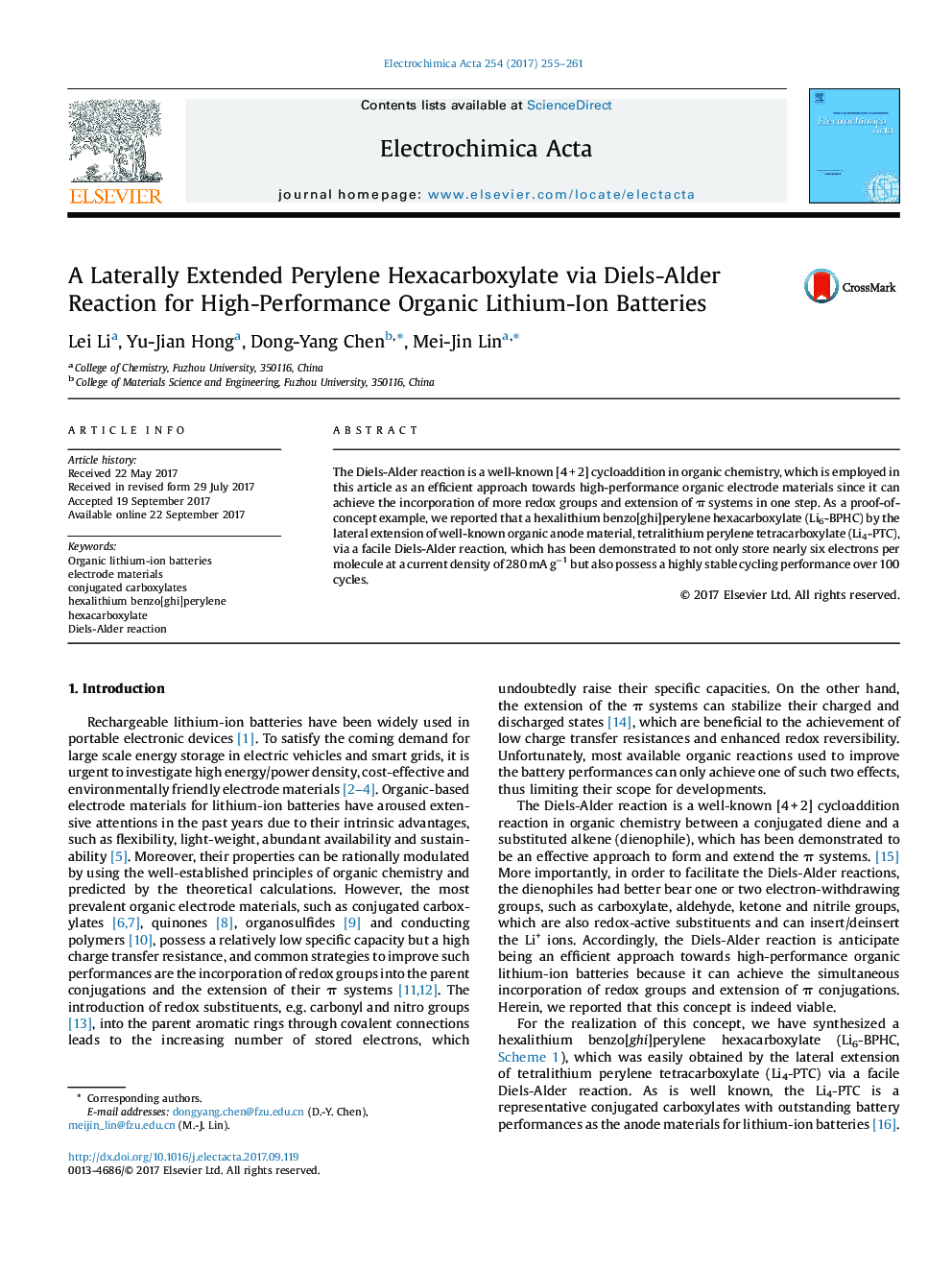| Article ID | Journal | Published Year | Pages | File Type |
|---|---|---|---|---|
| 6469825 | Electrochimica Acta | 2017 | 7 Pages |
â¢Diels-Alder reaction is an efficient strategy to incorporate more redox groups into and extend Ï systems in one-step.â¢Diels-Alder reaction is anticipated to be an efficient approach to achieve high-performance organic electrode materials.â¢A laterally extended perylene hexacarboxylate via Diels-Alder reaction has been design as a proof-of-concept example.â¢The electrochemical studies indicated it indeed possess a higher specific capacity and more stable cycling performance.â¢This finding is of considerable realistic significance for the high-performance organic electrode materials.
The Diels-Alder reaction is a well-known [4Â +Â 2] cycloaddition in organic chemistry, which is employed in this article as an efficient approach towards high-performance organic electrode materials since it can achieve the incorporation of more redox groups and extension of Ï systems in one step. As a proof-of-concept example, we reported that a hexalithium benzo[ghi]perylene hexacarboxylate (Li6-BPHC) by the lateral extension of well-known organic anode material, tetralithium perylene tetracarboxylate (Li4-PTC), via a facile Diels-Alder reaction, which has been demonstrated to not only store nearly six electrons per molecule at a current density of 280Â mAÂ gâ1 but also possess a highly stable cycling performance over 100 cycles.
Graphical abstractThe lateral extension of the well-known tetralithium perylene tetracarboxylate leads to perylene hexacarboxylate (Li6-BPHC, see TOC) via a facile Diels-Alder reaction, which possesses an enhanced performance for organic lithium-ion batteries.Download high-res image (149KB)Download full-size image
